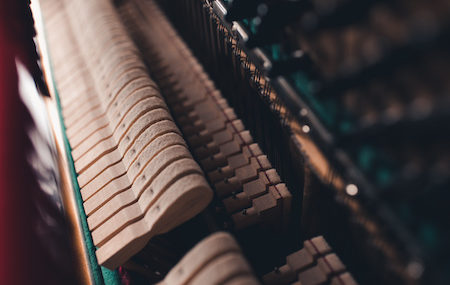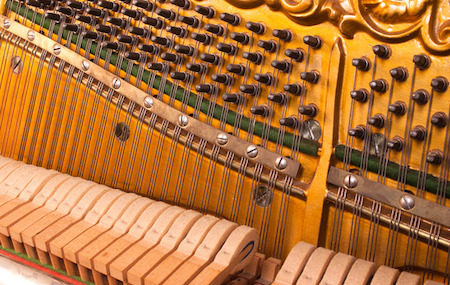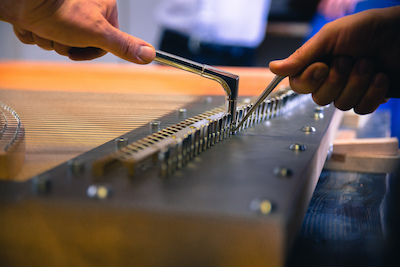You’ve found a new home. Congratulations! It’s a big time commitment to ensure a successful move.
As a piano owner, you have an additional task on your moving list: ensuring your cherished piano successfully makes the journey with you. Whether it’s a family heirloom, a beautiful addition to your living room, or a beloved musical companion, your piano is a valuable asset that deserves proper care.
What does that look like?
What Happens to a Piano During a Move
Moving a piano can be daunting, and it’s no surprise that the process can affect the instrument. Pianos are delicate and intricate instruments with thousands of individual parts. The vibrations, jostling, and changes in position during transportation can lead to a loss of tuning stability. Even minor bumps can throw the delicate balance of the piano’s internal components off, causing the pitch to go out of alignment.
The strings within the piano can undergo tension changes during the move, affecting the overall sound and tuning. That’s why scheduling a piano tuning after a move is essential to restore its pristine sound and ensure it performs at its best.
How New Climate Affects Piano Tuning
When you move your piano to a new location, you may be exposing it to a different climate than it’s used to. Changes in humidity and temperature can significantly impact the piano’s wooden components, such as the soundboard, bridges, and pinblock. These components expand and contract in response to varying humidity levels, which can affect the piano’s tuning stability.
For example, if you move from a dry climate to a humid one, the wood may absorb moisture and swell, leading to a rise in string tension and a higher pitch. Conversely, moving from a humid environment to a drier one can cause the wood to lose moisture, leading to a drop in string tension and a lower pitch.
How Long a Piano Should Acclimate After a Move Before Tuning
After a move, it’s crucial to allow your piano to acclimate to its new environment before scheduling a tuning. The length of the acclimation period can vary depending on factors like the distance of the move, climate differences, and the piano’s overall condition. In general, waiting at least two weeks is advisable before tuning your piano.
During this acclimation period, your piano will adjust to the new humidity levels and temperature, stabilizing the wooden components. Attempting to tune a piano too soon after a move can result in the need for frequent retuning, as the instrument will continue to adapt to its surroundings.
Tips to Help a Piano Stay in Tune Before and After a Move
Maintenance and tuning go hand in hand. In order to properly maintain your piano, tuning will be a regular part of your routine. If owning a piano is new to you, we have some tips for you to keep in mind:
- Maintain Consistent Humidity – Invest in a humidity control system for your piano, such as a piano dehumidifier or humidifier, to help stabilize humidity levels in its immediate environment.
- Position Your Piano Wisely – Place your piano away from direct sunlight, drafts, and heating or cooling vents to minimize fluctuations in temperature and humidity.
- Regular Maintenance – Schedule regular piano tunings, even when you’re not moving. This will help keep your piano in optimal condition and catch any minor issues before they become significant problems.
- Choose Professional Movers – When moving your piano, opt for professional piano moving services to ensure your instrument is handled with care during transportation.
- Consult a Piano Technician – If you’re uncertain about the condition of your piano or the best way to care for it after a move, consult a piano technician. They can provide expert guidance tailored to your piano’s specific needs.
A piano is not just a piece of furniture; it’s a work of art and a source of beautiful music. To ensure your piano’s longevity and maintain its sweet melody, piano tuning after a move is essential.
If you need professional piano tuning or moving services, don’t hesitate to reach out to us. We’re here to help you keep your piano in perfect harmony with your home.





